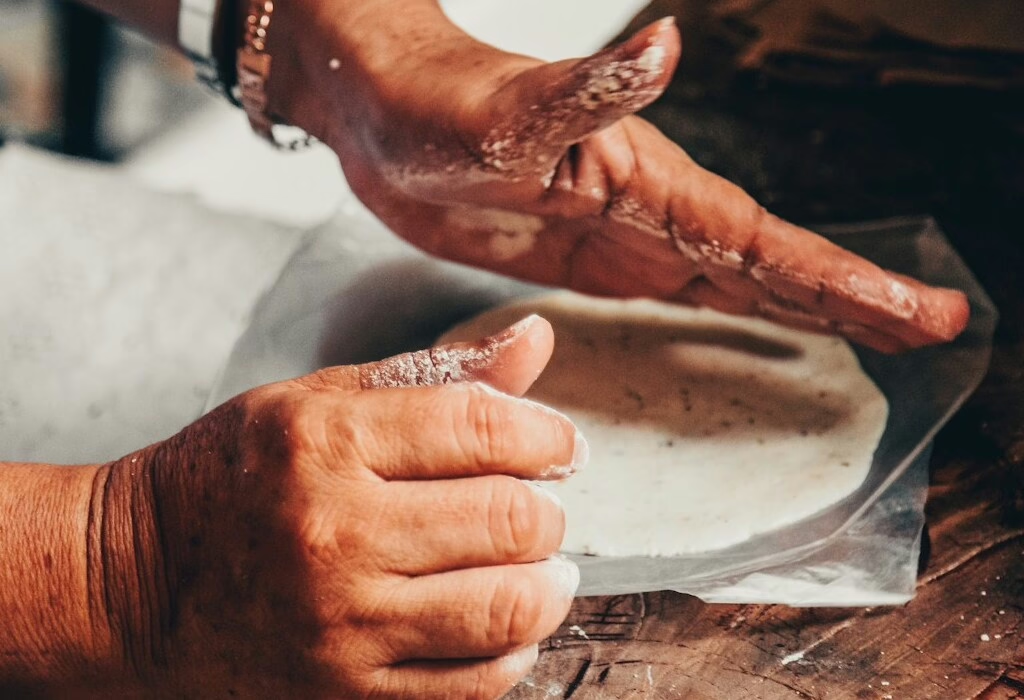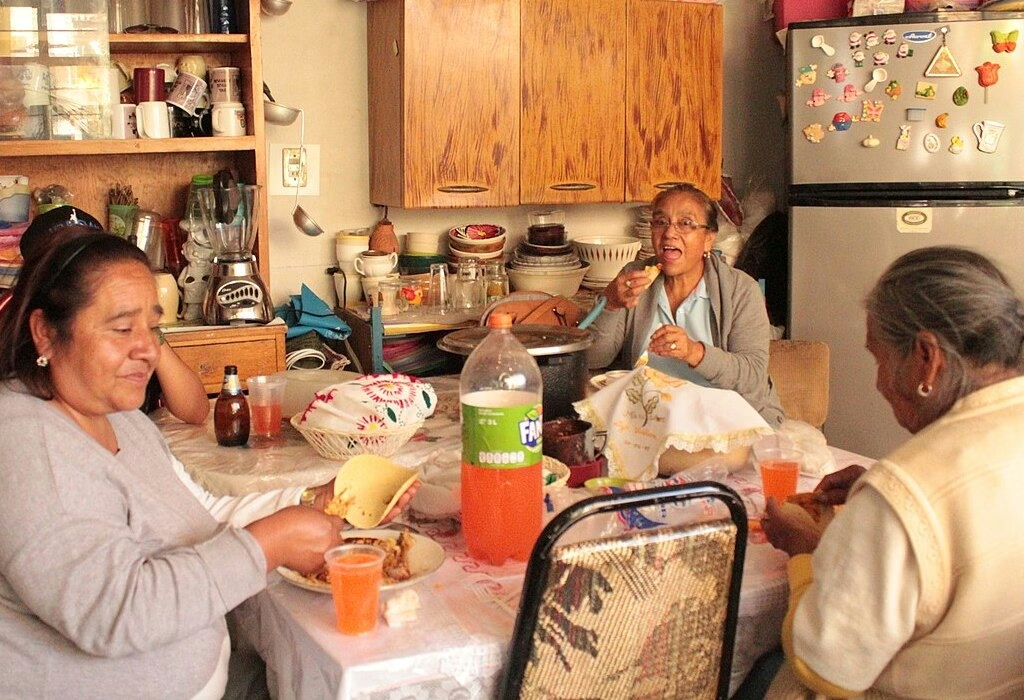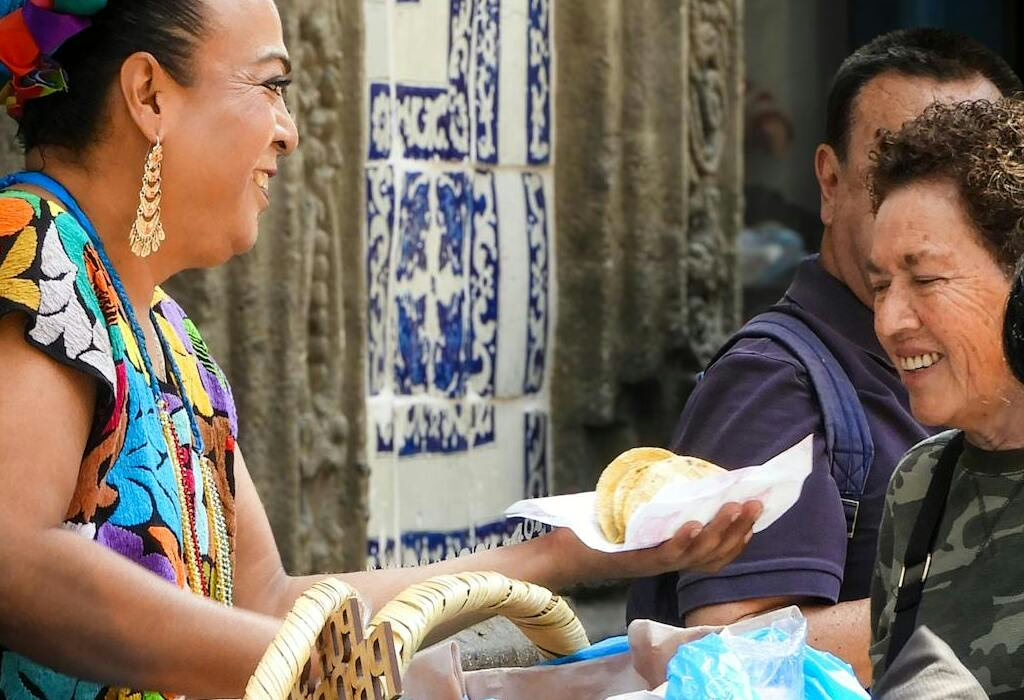Table des matières :
- Introduction
- Traditions alimentaires mexicaines
- Cinco de Mayo : Histoire et importance
- Plats mexicains traditionnels pour le Cinco de Mayo
- Le jour des morts (Día de los Muertos) : Signification et coutumes
- Aliments et offrandes traditionnels pour le jour des morts
- Autres traditions et célébrations alimentaires mexicaines
- La cuisine de rue mexicaine : Une exploration culinaire
- Traditions alimentaires mexicaines et spécialités régionales
- Conclusion
Introduction
La cuisine mexicaine est peut-être la plus connue des cuisines du monde. Les gens apprécient ses saveurs audacieuses, ses couleurs et ses textures extrêmement variées. Mais la cuisine mexicaine est bien plus qu'un simple plat. C'est un élément central de la culture, de la vie familiale et de l'histoire du pays. Lorsque les Mexicains cuisinent, ils cuisinent et racontent qui ils sont et d'où ils viennent.
Dans de nombreux foyers mexicains, les recettes sont transmises des grands-parents aux parents et aux enfants. Ces recettes ont parfois été transmises de génération en génération et remontent à plus loin, voire à l'époque où les Espagnols ont débarqué sur les côtes mexicaines. D'autres recettes combinent les influences de plusieurs traditions, reflétant la longue histoire du pays. Par exemple, le maïs, les haricots et les piments étaient utilisés par les anciens habitants du Mexique. De nouveaux ingrédients, comme le riz, le fromage et les épices, sont arrivés plus tard en provenance d'autres pays. Aujourd'hui, la cuisine mexicaine est un mélange d'ancien et de nouveau, de simple et de complexe, d'épicé et de sucré.

Au Mexique, la nourriture ne sert pas qu'à manger. Elle rapproche les gens.
Les familles cuisinent et mangent ensemble pendant les fêtes et les festivals. Des amis partagent des tacos à un stand de rue. Les voisins aident à faire tamales pour des événements spéciaux. Cuisiner et partager la nourriture est une façon de se sentir proche, de montrer son amour et de célébrer les bons moments.
Dans les différentes régions du Mexique, la nourriture est différente. Chaque région a ses propres plats, ses styles de cuisine et ses ingrédients préférés. Par exemple, les personnes vivant près de l'océan mangent beaucoup de fruits de mer. Les habitants des montagnes utilisent davantage de piments séchés et de maïs. Dans certains endroits, la nourriture est très épicée, dans d'autres, elle est plus douce. Mais partout, la nourriture joue un rôle important dans la vie.

Au Mexique, la nourriture est également utilisée pour célébrer les grands jours.
Il existe de nombreux plats spéciaux que les gens ne mangent qu'une ou deux fois par an. Certains sont destinés à des moments heureux, comme les parades et les fêtes. D'autres sont réservés aux moments calmes, lorsque l'on se souvient d'êtres chers qui sont décédés. Ces plats ont une signification profonde et leur préparation est une façon de se souvenir et d'honorer le passé. Dans cet article, vous en apprendrez davantage sur les traditions alimentaires mexicaines et sur la façon dont la nourriture fait partie des festivals importants.
Vous verrez que la nourriture mexicaine est riche de sens, et pas seulement de goût. Vous comprendrez également pourquoi les gens du monde entier aiment la cuisine de ce pays et comment chaque plat raconte une histoire particulière. Commençons ce voyage au cœur de la cuisine mexicaine. ¡Bon travail!

Traditions alimentaires mexicaines
La cuisine mexicaine ne se résume pas aux tacos et aux burritos ; elle englobe une tradition culinaire riche et variée qui célèbre l'histoire et la culture du pays. De la Cinco de Mayo à Journée des morts (Día de los Muertos), Les traditions alimentaires du Mexique sont profondément enracinées dans la religion, l'histoire et la diversité régionale.
Si vous souhaitez découvrir la cuisine mexicaine, il est essentiel de comprendre le contexte culturel de ces festivités et événements. Chaque année, les Mexicains marquent des étapes importantes et célèbrent leur patrimoine en mangeant et en buvant. De la mole poblano à chiles en nogadaChaque plat a une signification importante et reflète l'identité culturelle unique de son pays d'origine. région.
Dans cet article, nous allons explorer le Mexique Les traditions alimentaires les plus populaires et la manière dont les gens les célèbrent à travers la nourriture. Nous discuterons de l'histoire et de la signification culturelle de plats tels que tamales, pozoleet churroset comment ils ont évolué au fil du temps. Préparez-vous à partir à l'aventure culinaire qui vous permettra d'éveiller vos papilles et de découvrir les fascinantes traditions culinaires du Mexique.

Cinco de Mayo : Histoire et importance
Cinco de Mayoou le Le 5 mai est une fête largement célébrée au Mexique et dans les communautés mexicaines du monde entier. Contrairement à la croyance populaire, Cinco de Mayo n'est pas le jour de l'indépendance du Mexique, mais commémore la victoire de l'armée mexicaine sur l'Empire français lors de la bataille de Puebla en 1862. Consultez notre 20 novembre Article sur la journée de la révolution mexicaine !
L'importance de Cinco de Mayo est la célébration de l'héritage mexicain et de la résilience du pays face à l'adversité. Elle rappelle le courage et la détermination du peuple mexicain à défendre sa terre et son indépendance.
Cinco de Mayo est souvent célébrée par des défilés, de la musique, des danses et, bien sûr, de la nourriture. Les plats mexicains traditionnels tels que le guacamole, salsa, et enchiladas sont couramment appréciés lors de ces festivités. Les saveurs et les couleurs incroyables de ces plats reflètent l'esprit de fête et de fierté qui règne dans le monde entier. Cinco de Mayo représente. La nourriture consommée ce jour-là est assez similaire à celle consommée le jour de l'indépendance du Mexique (15 septembre).

Plats mexicains traditionnels pour le Cinco de Mayo
Lorsqu'il s'agit de célébrer Cinco de MayoÀ cette occasion, les plats traditionnels mexicains sont à l'honneur. Chaque région du Mexique a ses propres spécialités, mais les gens mangent généralement certains des plats traditionnels les plus célèbres dans tout le pays pendant cette période festive.
L'un de ces plats est mole poblanoLe mole poblano est une sauce riche et complexe à base de chocolat et de piments. Le mole poblano se déguste avec du poulet ou de la dinde. Cinco de Mayo célébrations. La combinaison du sucré, du salé et du saveurs épicées en fait un véritable plaisir pour le public.
Un autre plat populaire pour les Cinco de Mayo est chiles en nogada. Ce plat festif se compose de poivrons poblano rôtis et farcis d'un mélange de viande hachée, de fruits secs et de noix. Les poivrons sont ensuite recouverts d'une sauce crémeuse aux noix et garnis de graines de grenade, créant ainsi un plat aussi impressionnant visuellement que délicieux.
Tamales sont également un élément de base pendant Cinco de Mayo. Ces poches de masa de maïs cuites à la vapeur et remplies de diverses farces, telles que du poulet ou du porc râpé, sont enveloppées dans des feuilles de maïs et cuites jusqu'à ce qu'elles soient tendres. Les tamales sont un travail d'amour, souvent préparés en grandes quantités et partagés avec la famille et les amis pendant cette période spéciale.

Le jour des morts (Dia de los Muertos) : Signification et coutumes
Le jour des morts, ou Día de los Muertos, est l'un des événements les plus emblématiques et les plus largement célébrés du Mexique. C'est un moment où les familles se réunissent pour honorer et se souvenir de leurs proches décédés. La fête dure trois jours, du 31 octobre au 2 novembre.
Contrairement à Halloween, qui est souvent synonyme de peur et d'effroi, Le jour des morts est une célébration joyeuse de la vie et de la mort. Les Mexicains croient que pendant cette période, les âmes des défunts reviennent sur terre pour retrouver leur famille. Les autels, ou ofrendasLes fêtes mexicaines sont organisées dans les maisons et les cimetières afin d'accueillir et d'honorer ces âmes. Comme vous pouvez le constater, les fêtes de la gastronomie mexicaine sont là pour toucher nos cœurs et nos âmes à jamais.

Aliments et offrandes traditionnels pour le jour des morts
L'alimentation joue un rôle central dans la Journée des morts les célébrations. Les familles préparent des repas élaborés et des offrandes pour attirer les esprits de leurs proches. Pan de muertoLe pain des morts est un pain sucré qui se trouve souvent sur les autels en guise d'offrande. Le pain a une forme particulière, comme une tête de mort ou des os croisés.
Calaveras de azúcarLes crânes en sucre sont un autre symbole emblématique du jour des morts. Ces crânes colorés et charmants sont recouverts de sucre et portent les noms de ceux qui ne sont plus sur Terre. Les gens les placent sur les autels pour rappeler le cycle de la vie et de la mort.
Parmi les autres aliments traditionnels consommés lors de la fête des morts, on peut citer tamales, atole (boisson chaude à base de maïs) et mole. Ces plats sont empreints d'amour et d'attention et sont préparés à l'aide de recettes traditionnelles qui existent depuis des générations. Ils permettent aux familles de se rapprocher de leurs ancêtres et de conserver leurs souvenirs.

Autres traditions et célébrations alimentaires mexicaines
Tandis que Jour de l'indépendance du Mexique, Cinco de MayoSi la fête de l'agriculture et la fête des morts sont peut-être les événements les plus connus pour goûter la cuisine mexicaine, il en existe bien d'autres qui valent la peine d'être découverts. De la Guelaguetza à Oaxaca de la Feria Nacional del Mole à San Pedro Atocpan, le Mexique est le théâtre d'une grande variété de célébrations culinaires.
La Guelaguetza, qui a lieu chaque année en juillet à OaxacaCe festival met en valeur les cultures indigènes de l'État par le biais de la musique, de la danse et, bien sûr, de la nourriture. Les plats traditionnels tels que tlayudas (grandes tortillas avec divers ingrédients) et le mezcal (boisson alcoolisée) sont les plats préférés de cette célébration étonnante.
La Feria Nacional del Mole, à San Pedro Atocpan, est un festival du mole 100%, l'une des sauces les plus impressionnantes du Mexique. Les amateurs de mole de tout le pays se réunissent pour déguster différentes variétés de mole, assister à des démonstrations de cuisine et célébrer cette sauce emblématique.

La cuisine de rue mexicaine : Une exploration culinaire
Aucune discussion sur les traditions alimentaires mexicaines ne serait complète sans mentionner les fascinantes cuisine de rue qui imprègne le pays. A partir de taco Des stands de vente aux chariots de nourriture, la cuisine de rue mexicaine est une aventure culinaire qui n'attend que vous. Tous les Mexicains aiment manger dans la rue !
Tacos al pastor, un plat de rue populaire, se compose de porc mariné cuit sur une broche verticale et servi dans une tortilla chaude. On ajoute à la viande de l'ananas, de l'oignon et de la coriandre, créant ainsi une délicieuse combinaison de saveurs et de textures. Un autre plat préféré des habitants de la rue est le elote, ou maïs de rue mexicain. Les épis de maïs grillés sont enduits de mayonnaise, saupoudrés de poudre de chili et garnis de jus de citron vert et de fromage émietté. Il s'agit d'un délice sucré, salé et acidulé qui capture parfaitement l'essence de la cuisine de rue mexicaine.

Traditions alimentaires mexicaines et spécialités régionales
Les traditions culinaires du Mexique sont aussi diverses que ses paysages. Chaque région propose des plats et des saveurs uniques qui reflètent les ingrédients locaux et les influences culturelles.
Dans le cadre de la Péninsule du Yucatan, par exemple, Cuisine maya est toujours d'actualité. Les plats traditionnels tels que cochinita pibil (porc rôti lentement et mariné dans du jus d'agrumes et de la pâte d'achiote) et poc chuc (porc grillé mariné dans du jus d'orange acide) sont appréciés dans cette région. Dans les États du nord du Mexique, l'élevage de bétail a eu une influence majeure sur la cuisine locale. L'Asado de Puerco (porc cuit à l'étouffée dans une sauce épicée au piment rouge) et le cabrito (chèvre rôtie) sont des plats populaires dans cette région.

Conclusion
Cuisine mexicaine est plus qu'un simple moyen de subsistance ; elle est le reflet de l'histoire, de la culture et de l'identité du pays. Les ingrédients, les saveurs et les techniques utilisés dans la cuisine mexicaine racontent l'histoire de la conquête, de la migration et du mélange des cultures. L'utilisation du maïs, par exemple, remonte à des milliers d'années, à l'époque des civilisations indigènes du Mexique. Mexico. Le maïs n'est pas seulement un aliment de base Cuisine mexicaine mais aussi un symbole d'identité culturelle et de résistance. La culture et la consommation de maïs ont joué un rôle crucial dans la préservation des traditions alimentaires mexicaines.

Pendant la période coloniale, les Espagnols ont donné des épices telles que les piments et le chocolat, qui sont devenues partie intégrante de la cuisine mexicaine. Elles ajoutent de la profondeur aux saveurs et de la complexité aux plats, créant ainsi une expérience culinaire unique, typiquement mexicaine.
Exploration Traditions alimentaires mexicaines et les festivals n'est pas seulement un voyage délicieux. C'est aussi l'occasion de se plonger dans la riche tapisserie de l'histoire de l'Europe. Le Mexique l'histoire et la culture. Des célébrations impressionnantes du jour de l'indépendance mexicaine à la commémoration sincère du jour des morts, ces célébrations offrent une fenêtre sur l'âme d'une nation.
En comprenant la signification culturelle des plats mexicains et en adoptant les spécialités régionales, nous pouvons mieux apprécier les saveurs et les histoires qui se cachent derrière la nourriture. Ainsi, que vous dégustiez des plats de rue tacos ou la préparation d'un mole traditionnel, n'oubliez pas que chaque bouchée est une célébration de l'héritage culinaire du Mexique.

